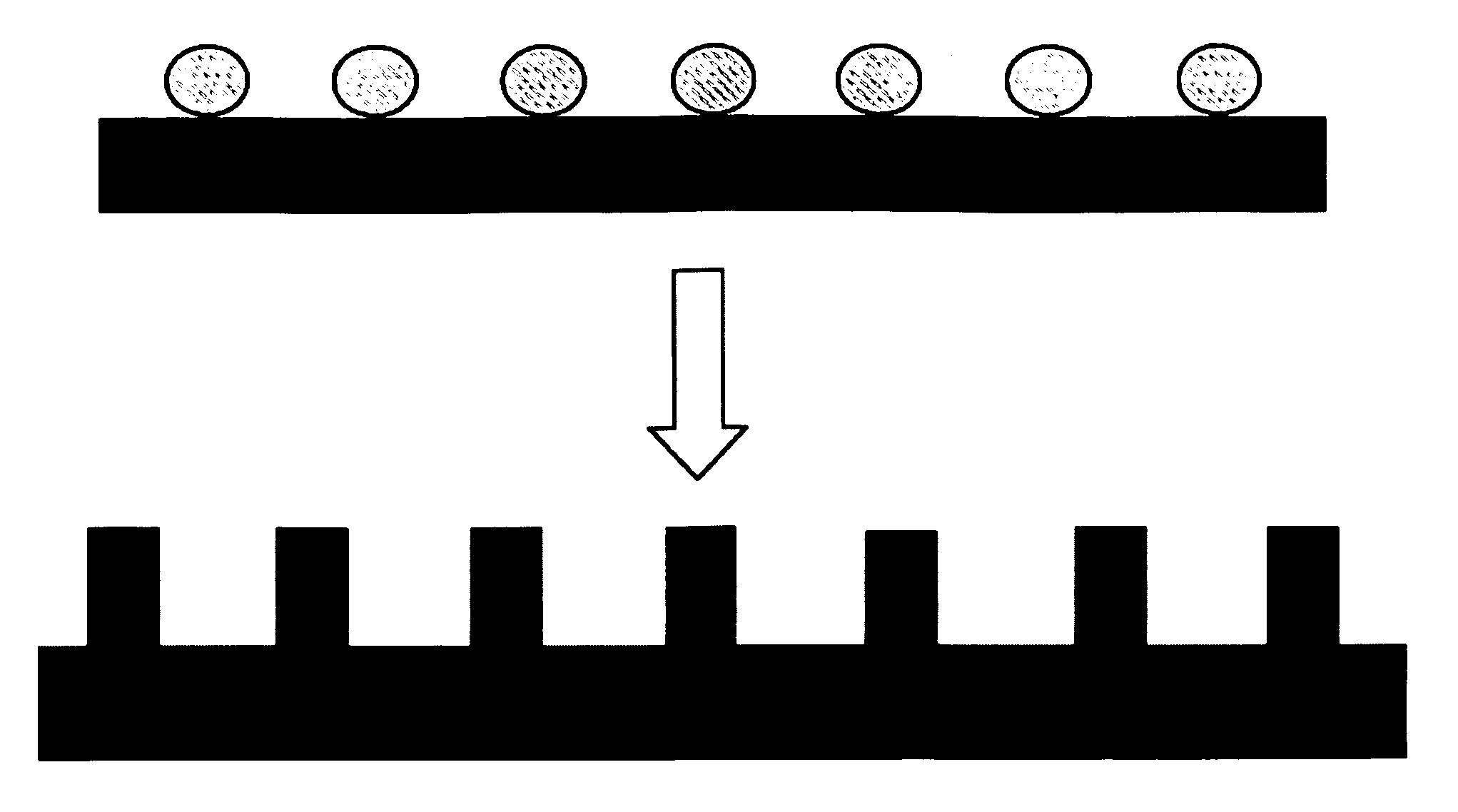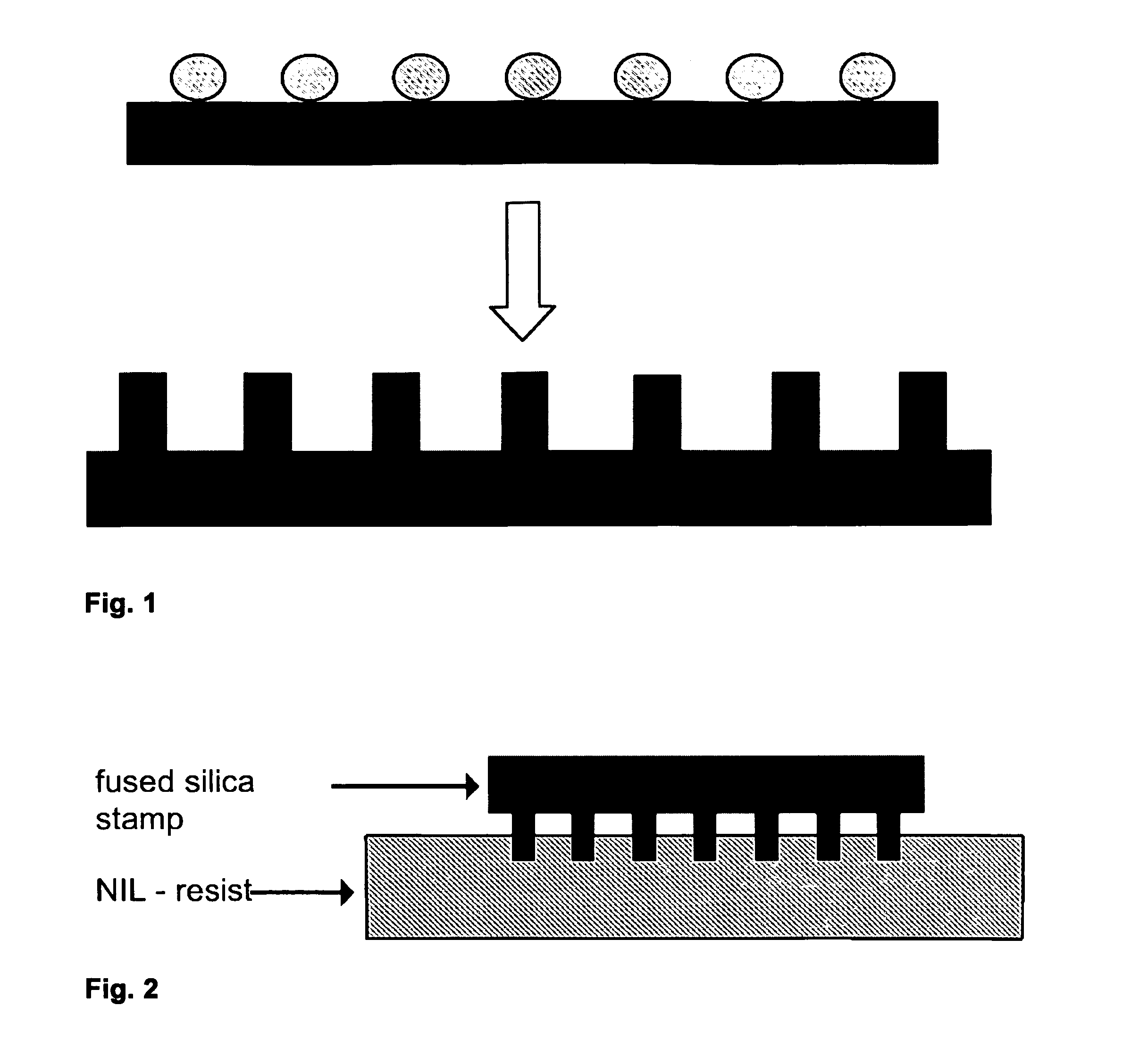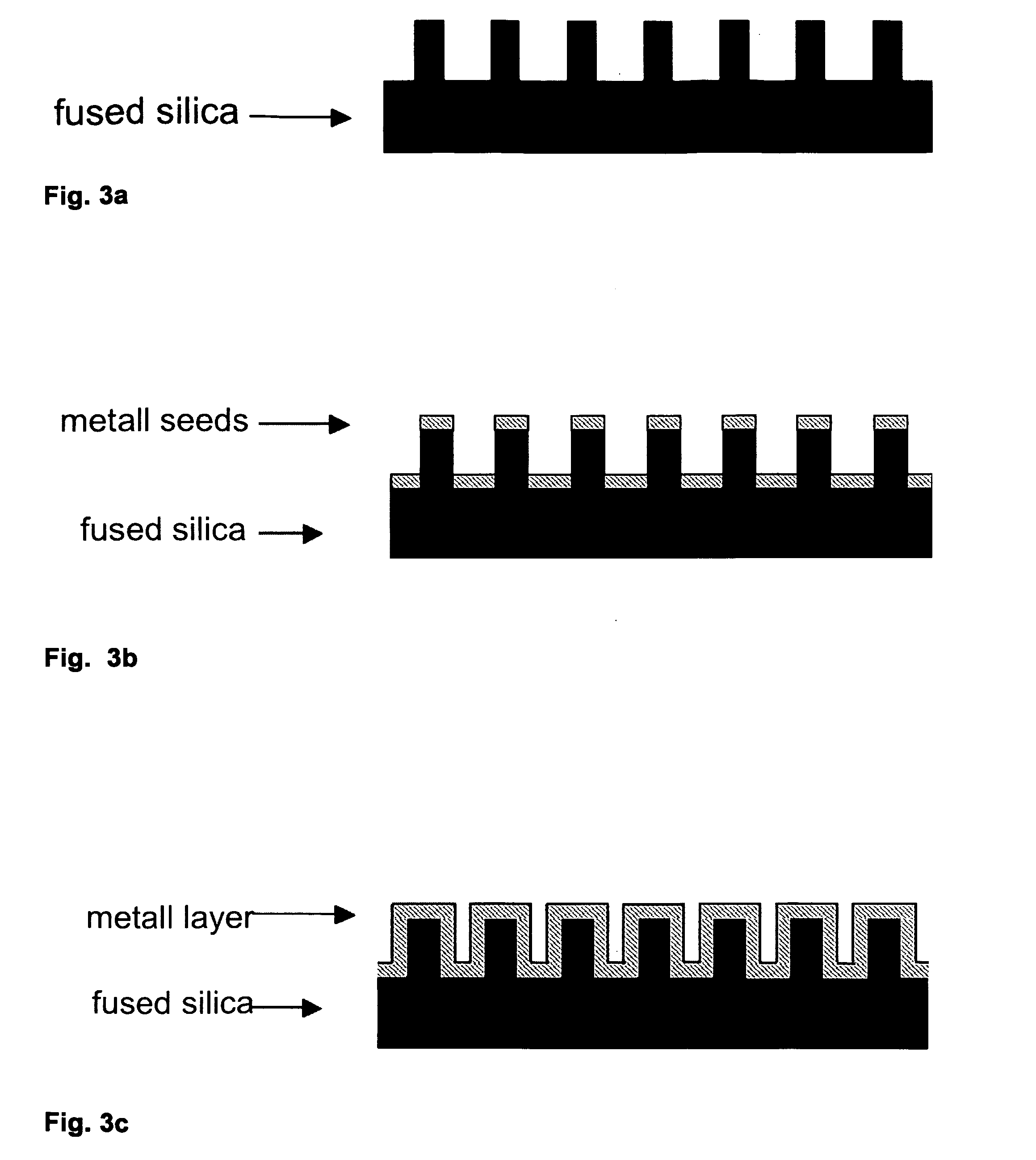Process for producing highly ordered nanopillar or nanohole structures on large areas
a nano-hole and nano-pillar technology, applied in the field of high-order nano-hole or nano-hole structure production on large areas, can solve the problems of low production cost, no products commercially available, and the use of expensive and time-consuming lithographic techniques in the order of hole arrays on the sub-150 nm rang
- Summary
- Abstract
- Description
- Claims
- Application Information
AI Technical Summary
Benefits of technology
Problems solved by technology
Method used
Image
Examples
example 2
Preparation and Testing of a Metal Master for Injection Molding or Compress Molding Processes
[0068]Successful fabrication of a tool for an injection molding or compress molding process was proven by the following experiments. First, a fused silica sample decorated with nanopillars or nanocones was fabricated by micellar blockcopolymer nanolithography (essentially as described in DE 10 2007 014 538 A1 or DE 10 2009 060 223.2). The resulting pillar distance was about 80 nm and pillar height about 250 nm. Subsequently, this sample has been coated with a thin gold layer of about 50 nm by sputtering (FIG. 10) for about 120 sec in a commercially available tool (Baltec MSC01). Here, gold instead of nickel or chromium was used since gold is easier to deposit via electroless deposition.
[0069]Afterwards this layer was grown further via electroless deposition (FIG. 11). For that purpose the sample has been exposed to a 1 mM solution of HAuCl4 in water. The electroless deposition has been start...
PUM
| Property | Measurement | Unit |
|---|---|---|
| mean distance | aaaaa | aaaaa |
| depth | aaaaa | aaaaa |
| mean distance | aaaaa | aaaaa |
Abstract
Description
Claims
Application Information
 Login to view more
Login to view more - R&D Engineer
- R&D Manager
- IP Professional
- Industry Leading Data Capabilities
- Powerful AI technology
- Patent DNA Extraction
Browse by: Latest US Patents, China's latest patents, Technical Efficacy Thesaurus, Application Domain, Technology Topic.
© 2024 PatSnap. All rights reserved.Legal|Privacy policy|Modern Slavery Act Transparency Statement|Sitemap



